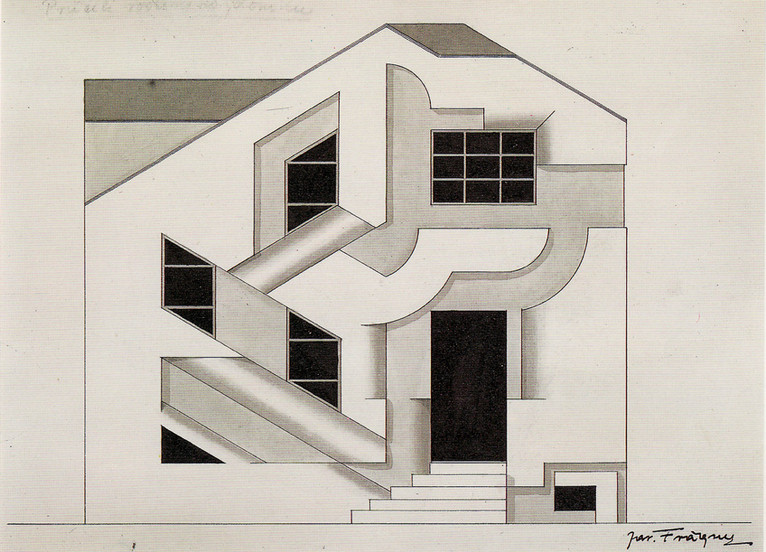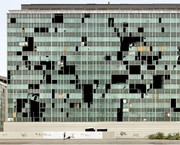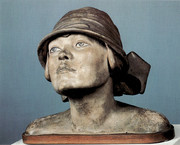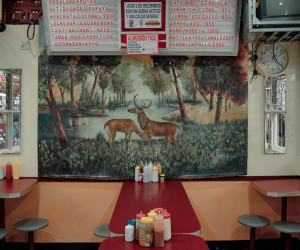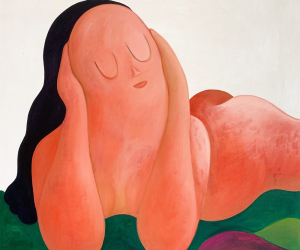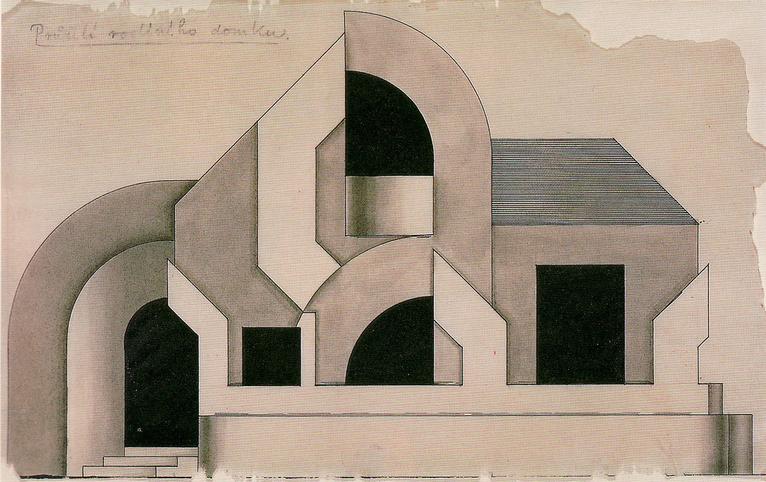
Jaroslav Fragner
Posted by Fabio 22 July 2010
Czech architect and teacher Jaroslav Fragner (25 Dec 1898 – 3 Jan 1967) graduated in architecture in 1922 from the Technical University, Prague. With his fellow students Vit Obrtel (1901-88), Evzen Linhart and Karel Honzik he formed the Four Purists, who sought to simplify architectural form as much as possible to geometric volumes.
In 1923 he became a member of Devetsil, the avant-garde group centred on the figure of Karel Teige; he also joined the Architects’ Club. Fragner’s first independent work was the post-natal unit (1923-8) at Mukacevo, Ukraine, one of the first buildings in which Functionalist principles were applied. In 1927 he designed a garden city housing scheme (unexecuted) for Barrandov, Prague, with several types of suburban houses, based on the optimization of local features.
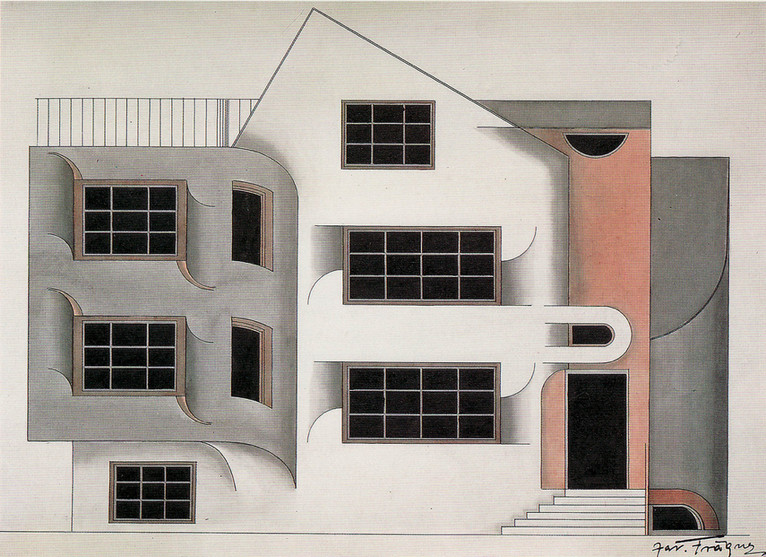 These ideas were reflected in a number of other houses, for example in Kostelec nad Cernymi Lesy (1931-2) and Nespeky (1932-3), which also used various materials such as bare brickwork and natural stone to achieve harmony with the site. Between 1930 and 1941 Fragner worked on the vast industrial site of the ESSO power station at Kolin, where the main building in particular is a prime example of Functionalist architecture in its planning, geometric volumes and relationship with the environment. Another striking work is the Auto-Tatra showrooms (1932), Kolin, a two-storey building with an open display area with galleries on the ground floor and a separate flat above; the composition of large, uninterrupted glazed surfaces, complemented by an exterior staircase and terrace, has a polished appearance. In 1931 Fragner joined the Mines Union of Artists, of which he was Chairman from 1940 to 1966. He was also a founder-member of the Union of Socialist Architects (1933). In 1949 he began to work at Stavoprojekt, the socialist design organization, and he produced a few works in the spirit of Socialist Realism. He became a professor at the Academy of Fine Arts, Prague (1949), and from the 1950s he worked mainly on the restoration of historic buildings, for example the reconstruction (1954-69) of the Karolinum in Prague.
These ideas were reflected in a number of other houses, for example in Kostelec nad Cernymi Lesy (1931-2) and Nespeky (1932-3), which also used various materials such as bare brickwork and natural stone to achieve harmony with the site. Between 1930 and 1941 Fragner worked on the vast industrial site of the ESSO power station at Kolin, where the main building in particular is a prime example of Functionalist architecture in its planning, geometric volumes and relationship with the environment. Another striking work is the Auto-Tatra showrooms (1932), Kolin, a two-storey building with an open display area with galleries on the ground floor and a separate flat above; the composition of large, uninterrupted glazed surfaces, complemented by an exterior staircase and terrace, has a polished appearance. In 1931 Fragner joined the Mines Union of Artists, of which he was Chairman from 1940 to 1966. He was also a founder-member of the Union of Socialist Architects (1933). In 1949 he began to work at Stavoprojekt, the socialist design organization, and he produced a few works in the spirit of Socialist Realism. He became a professor at the Academy of Fine Arts, Prague (1949), and from the 1950s he worked mainly on the restoration of historic buildings, for example the reconstruction (1954-69) of the Karolinum in Prague.

